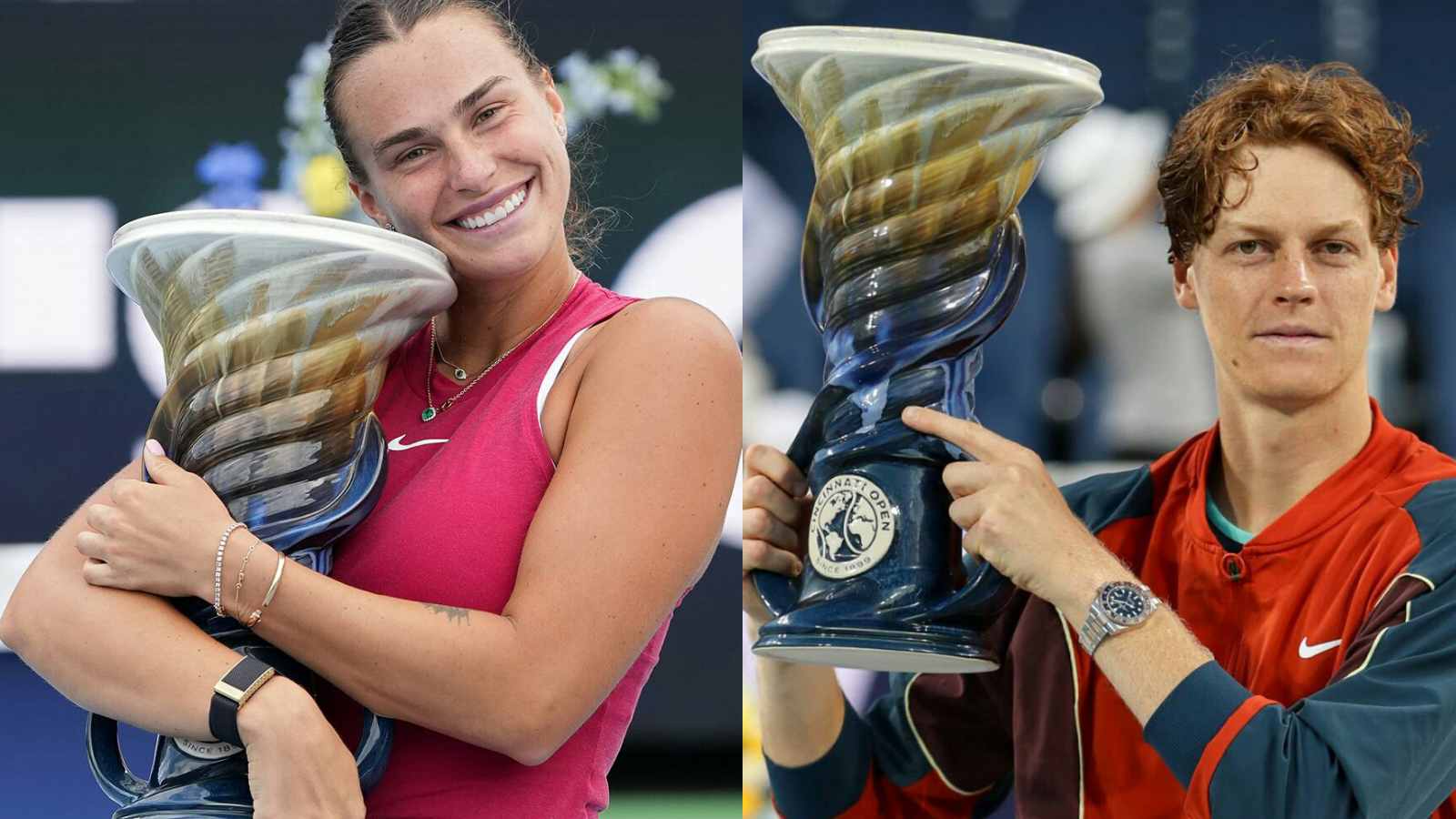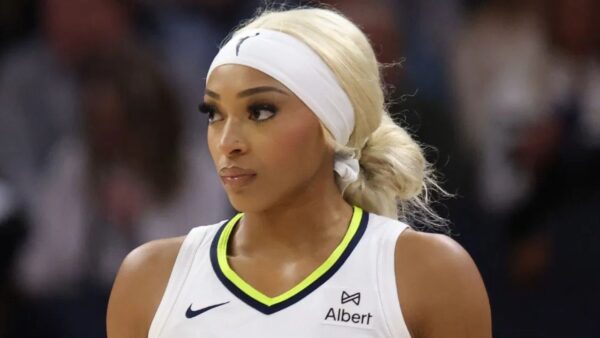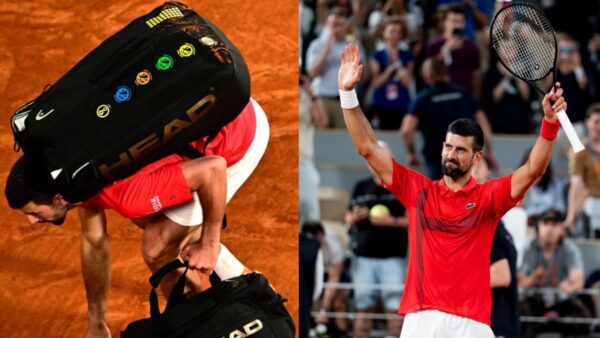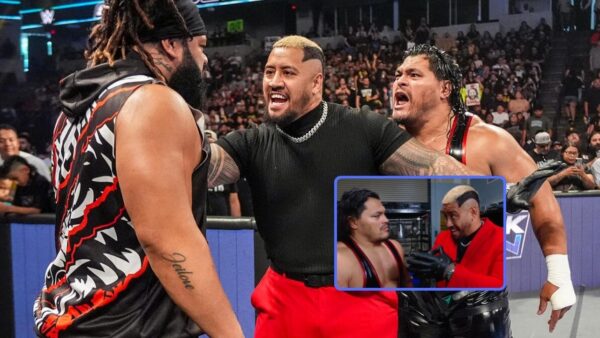Aryna Sabalenka’s ‘half’ prize money after winning Cincinnati Open as compared to men’s champion Jannik Sinner sparks outrage
Jannik Sinner bagged $1,049,460 in prize money, while Aryna Sabalenka got $523,485, which is less than what the men's runner-up received.

Aryna Sabalenka, Jannik Sinner (Images via X)
The Cincinnati Open is one of the few tournaments that doesn’t pay the women players the same prize money they pay the male players. On Monday (August 19), when Aryna Sabalenka won the tournament, she received half of what men’s champion Jannik Sinner got after his win.
Sabalenka outclassed home favorite Jessica Pegula 6-3, 7-5 to emerge as the champion. In the men’s final, Sinner came out on top of another home favorite, Frances Tiafoe, with a scoreline of 7-6(4), 6-2.
Sinner got $1,049,460 in prize money for being the champion, while Sabalenka received $523,485, which is even less than what the men’s runner-up collected. Tiafoe, the runner-up, got the prize money of $573,090.
This started a discussion on X. Many felt it was an injustice to the women players, who played the best-of-three all week just like the men but earned less.
Jannik Sinner will receive $1,049,460 for winning the ATP1000 event in Cincinnati
— Myles David (@TunedIntoTennis) August 20, 2024
Aryna Sabalenka will receive $523,485 for winning the WTA1000 event in Cincinnati
They played at the same venue all week
They played best of 3 sets all week
They will NOT get paid the same pic.twitter.com/QT2IjZMs5a
The prize money offered at Cincinnati Open triggers criticism from netizens
Though tennis fans slammed Cincinnati Open for giving less money to the women players, a few however feel that everything just boils down to the fact that tennis at the end of the day, is a business, and the organizers have to keep in mind the economics of it.

This is why some feel paying less to women has nothing to do with sexism as more profits come from the men’s section because most tennis fans ‘prefer’ to watch men’s tennis than women’s. Those who do not advocate for equal pay also think it’s unfair to men who play the best-of-five in a Grand Slam but earn the same prize money as women.
Check out their reactions here:
Men & Women gets paid the same in slams.
— ???? (@Salle7De) August 20, 2024
Women play 3 sets.
Men play 5 sets.
They get PAID the same.
With your arguments, this must truly disturb you.
You could say the same thing about Grand Slams where men play best of five and get paid the same.
— Peter Koolen (@PKoolen1967) August 20, 2024
What were ticket sales on the days Sinner played Vs the days when Sabalenka played? Don't put emotions in this. Just economics.
— Cedric Babu Ndilima (@CedricNdilima) August 20, 2024
Ever run a business?
— J3RONIMO (@SpaceArtisan2) August 20, 2024
She gets paid about 500,000 more than she should
— nog djovi (@frenchwaterbtl) August 20, 2024
Compare views and comeback to me
Yes, should be more equal.
— richard (@richardzphotoz) August 20, 2024
But tennis like any sport is a business. If there are no viewers, then you got no business.
I am curious though to see how much the event makes in itself.
Also sport stars make the majority of their money from sponsorships…if anything decrease…
Bollocks. She’s doing the same job she should be paid the same. There has been times in recent years where the women’s matches have been out performing the men’s. Same job same pay. Not rocket science. Not as though there
— Mullener54 (@galfor) August 20, 2024
Isn’t the money in tennis b
Agree in some ways. I do think ATP has done a better job of marketing themselves. But remember that costs a lot of money, to hire a team, and have people create content on the go, at all the tournaments.
— richard (@richardzphotoz) August 20, 2024
Regardless, it should be something the WTA should look at investing in
How many people watched the Sinner game and how many people watched the Sabalenka?
— Alexandru Fartade (@KullAxel) August 20, 2024
If a movie gets 1 Million views at the theaters and another one gets 500k views at the theater, should they both get the same amount of money???
Nowadays athletes gets paid based on the amount…
That’s wrong. They shouldn’t get the same at Slams, but all bof 3set tournaments they should.
— DB (@dbdegn) August 20, 2024
On paper it’s a nice argument.
— FabRi (@FastFab_83) August 20, 2024
But you forget many others, such as:
– TV rights & TV distribution
– sponsors & sponsoring revenue
– tickets & merchandising
Just to quote these.
I highly doubt any of these are similar between men & women (regretfully)
Though the discussion about equal pay won’t stop until both sides of the party earn the same amount of money in every tournament, Grand Slam events offer equal prize money to both women’s and men’s players. The historic decision was taken in 1973 when the US Open became the first of the four major events to pay equal money.
It all started when Billie Jean King won the 1972 US Open and was stunned after knowing she earned $10,000, while the men’s champion, Ilie Nastase, bagged $25,000. Thanks to her campaign and incessant efforts for pay parity, the US Open started awarding equal prize money from the next year.
The Australian Open followed suit 11 years later, but in 1996, due to more views on men’s matches, they started paying the ATP players more. Four years later, they again changed their stance, and it hasn’t changed since then. Then in 2007, the French Open and Wimbledon did the same.
In case you missed!
- “This one feels very special,” Jannik Sinner excited after winning Cincinnati Open title in his ‘birthday week’
- “Thank you to my boyfriends,” Aryna Sabalenka brings out her funny side with an epic slip-up after Cincinnati Open title win







